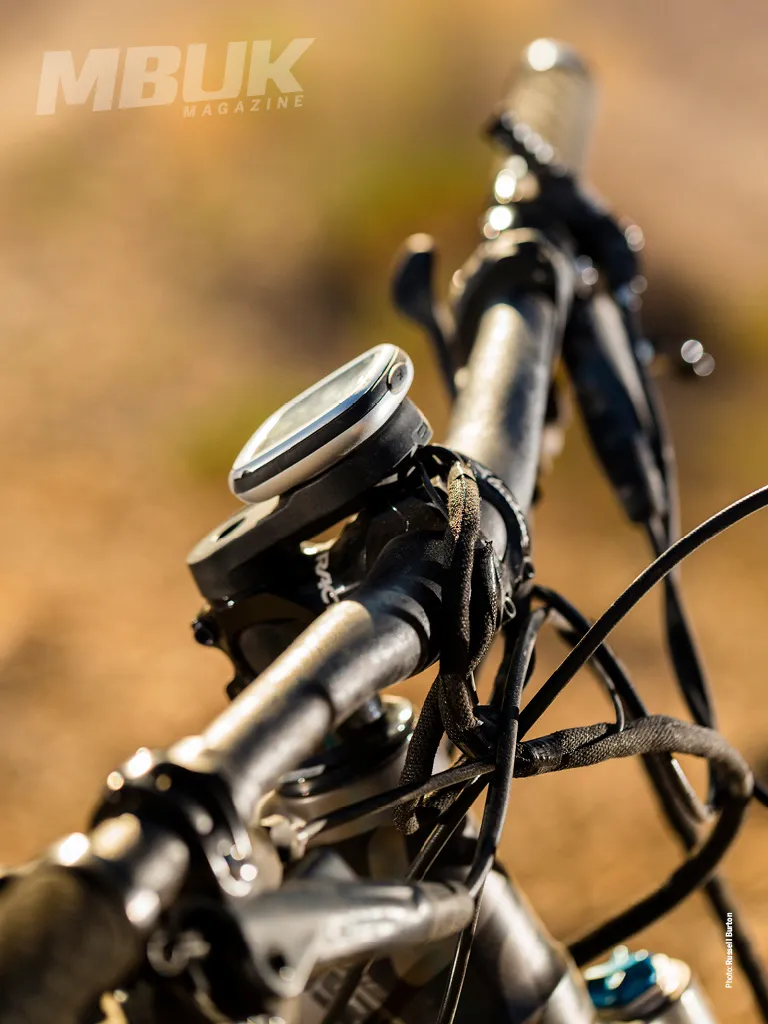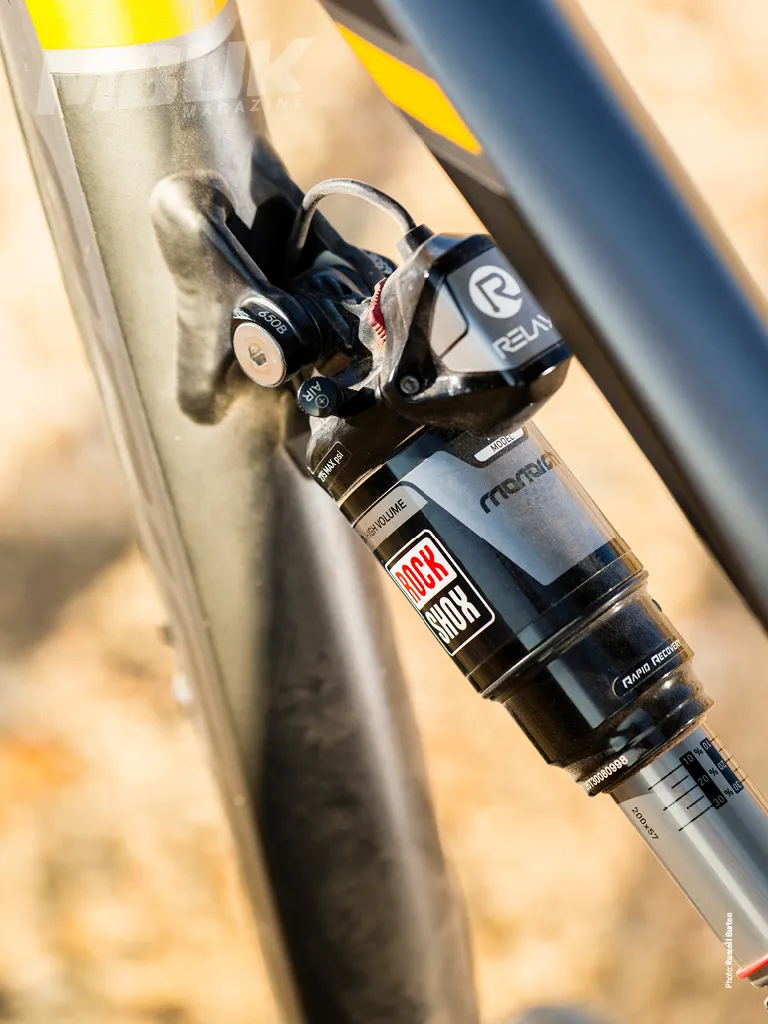The Spicy has been the benchmark 'all-mountain' bike for a while now, and every year Lapierre have to tread a fine line between leaving well alone and keeping ahead of the opposition.
The 2014 bike treads that line closer than ever, with genuinely next-level performance aspects balanced by other potentially deal-breaking issues.
Ride and handling: EI takes it to the next level
If you can afford it, the EI suspension turns an already benchmark bike into a properly superlative ride. The Spicy has always pedalled well and at under 30lb with all the EI gear, a dropper post and big rotor brakes, this alloy bike is lighter than a lot of carbon competitors. Add electrically controlled efficiency and it'll genuinely keep pace with much shorter travel machines as long as you keep the super-sticky Trailstar compound Schwalbe tyres off Tarmac.
The more technical and varied the climb gets, the more the suspension comes into its own, leaving manually managed shocks feeling positively primitive as the rear shock whirrs and chunters its way through microsecond responsive damping changes.
Those same Schwalbe tyres underpin the increased stiffness and railing confidence of the lower slung Spicy superbly too, to the point where we really struggled to break it free in turns and get the dust clouds the art department wanted. Running fully open, the tweaked geometry (and much better looking) OST+ suspension linkage has few matches when it comes to nigh-on auto pumping through boulders and taking serious trail trauma in its stride.
There are some things that potentially spoil an otherwise outstanding bike though. The Fox 34 fork is more progressive than it was but we still had to run crazy high pressures to stop them blowing through their travel, which directly affects the reaction of the rear suspension. We're also hoping that the loose Maxle axle terminal that falls out when you remove the axle or spins when you try to tighten it will be sorted in full production models – but have the Loctite ready just in case.
We did have an issue with the super wide splay of the rear chainstays. After a couple of minutes clobbering them with our heels on every pedal stroke, we started to twist our feet outwards instinctively. However, Lapierre eased our long-term fears with the assurance that the chainstays on the production bikes will be 1.5cm narrower (7.5mm each side) than on the bike we rode.
Frame and equipment: ups and downs
The positives are very obvious. Even with 10mm less rear travel, this season's must-have 650B wheels make the bike smoother and more surefooted across the flat out, quick reaction trails that the Spicy has always loved. Lapierre have inserted bigger wheels without increasing the chainstay length, and even with a 0.5 degrees steeper head angle they make the bike even more stable and locked into corners than before.
The fit of the bike has also been modified significantly, with 15mm more reach in the top tube so you don't have to buy a size bigger than you probably should to get the right reach. You finally get a short stem and wide bar RaceFace cockpit as standard, rather than having to barter for one in place of the old XC-style setup when you buy your bike. Lapierre's star development rider and design consultant, multiple downhill world champion and legendarily sensitive bike fettler Nico Vouilloz, is also behind the super-wide rear chainstays that completely hid the rear brake from crash or uplift damage on this pre-production model - they'll be narrower on the bikes you can buy.
Like last year, you can buy a Spicy with or without EI suspension. This system, used by Lapierre, Ghost and Haibike, uses fork movement, wheel speed and crank axle sensors to automatically control the damping settings of the rear shock – and it's genuinely amazing.
Once you have the fork and shock pressure set up right and have chosen your preferred sensitivity setting, it's stiff under power on smooth stuff but super controlled as soon as you hit the rough. You'll occasionally feel it getting momentarily caught out but you can switch it to fully open or fully locked via a handlebar remote control.
Despite our doubts, we ran several sets long-term last year without problems, which leaves only the cost and weight (£500 extra and around 600g for the complete kit including sensors, batteries, computer head, wiring and servo motor on the RockShox shock) as downers.







